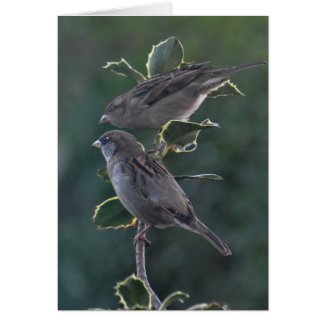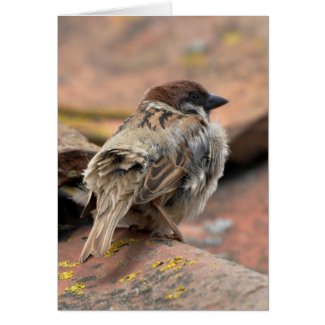.jpg) |
| Tree Sparrows nesting under the roof tiles at Bempton RSPB Photography copyright to annmackiemiller |
TREE SPARROWS
In many, probably most, areas of Britain tree sparrows are becoming a rare sight. We have lost something like 93% of the tree sparrow population between 1970 and 2008 - an appalling figure. Fortunately there are several initiatives in progress to redress this.
So seeing so many in one place is a real thrill for me. Of course they come to be fed, but they also come to nest under the red pantiles on the roof of the visitor's centre. The spaces between the tiles are just the perfect size for these little birds and of course the tiles absorb heat and keep the nests very warm.
.jpg) |
| tree sparrow on red tile roof |
.jpg) |
| "Who you looking at?" Tree Sparrow |
FUN FACTS ABOUT TREE SPARROWS
I mean to write a page full of info on tree sparrows but meantime how about some simple facts?- Species = Passer montanus. Family = Passeridae. Common name = Tree Sparrow.
- Length = 5.5 inches. Weight = 1 oz. Wingspan = 8 inches.
- Unlike most birds the tree sparrows actually pair up in the autumn rather than the spring.
- The tend to live in small colonies, sometimes quite large colonies with house sparrow - their slightly larger cousins.
- Male and females look alike.
- They are distinguished from house sparrows by their tan cap.
- They eat mainly seeds - hence that typical seed-eater's beak. Will feel small insects to their young.
- They usually lay up to 7 eggs. They hatch in around 12 days and fledge in 15-20 days.
- They will generally have 3 broods every year.
- In the winter, the base of the beak turns from black to yellow.
What do Tree Sparrows Eat?
As you can probably tell by the shape of that beak - they are primarily seed eaters. The beak is ideal for breaking into seeds and shells. They will also take plants, especially buds and berries of course. Tiny insects supply them with their protein.How Can You Tell the Difference Between a Tree Sparrow and a House Sparrow?
They are very similar but the tree sparrow is smaller and rounder. It is most distinctive difference is the brown cap and the white face patch has a black spot until the house sparrow..jpg) |
| Tree sparrow, note tan cap and black face spot |
 |
| House Sparrows on holly |
Display and Breeding Information on Tree Sparrows
Like most little birds, during the breeding season (late April to June) tree sparrows will throw out their chest and quiver their tail and wings to attract the attention of the female. She may exhibit behaviour similar to chicks in begging to be fed. You may also see a kind of dance between them. They may take turns to rub toward their mate with tail cocked and stretching the beak forward while the other one bows.
They will lay anything from 2-7 eggs and will incubate them for around 14 days. The adults share incubation doing a shift change to allow the other to feed. They will feed the chicks for another two weeks before encouraging the fledglings out of the nest. They may have two or even three broods per year depending on how plentiful food is and what the weather is like.
This year - 2014 friends were lucky enough to attract a pair of breeding tree sparrows to a nesting box in their garden. The pair had two successful broods and laid a third but these failed to hatch probably because the weather took an unexpected cold turn not long after the eggs were laid.
Photo Gallery of Tree Sparrows

.jpg)
.jpg)
.jpg)
.jpg)
.jpg)
.jpg)
.jpg)

.jpg)

.jpg)

Very interesting learning about the tree sparrow. I think they are quite rare, I am going to keep a closer look out for them now though. It is shocking that we have lost 93% of them between 1970 and 2008 though but I am glad initiatives are in place to help them. Beautiful adorable photos!
ReplyDelete